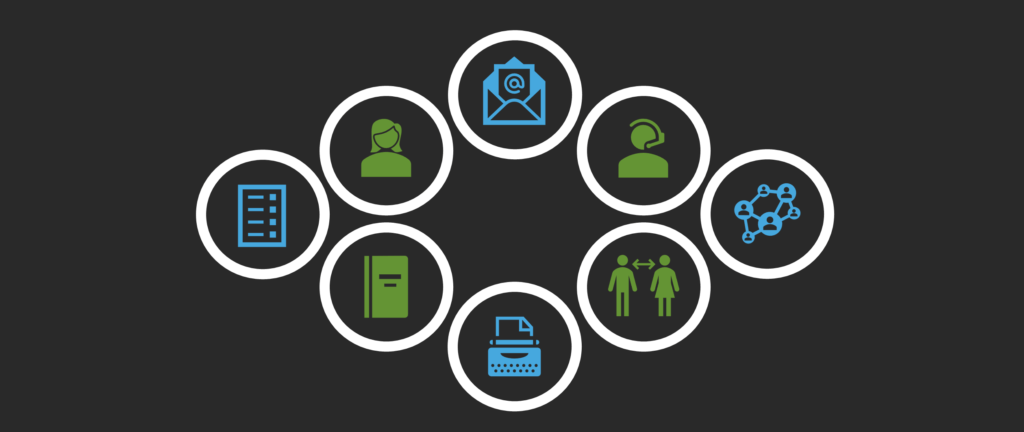Reverse Engineering Your Competitors’ Lead Generation Tactics: What Works and What Doesn’t
Understanding how your competitors attract and convert leads is invaluable. Reverse engineering competitors’ lead generation tactics allow you to uncover effective strategies, spot weaknesses, and identify opportunities to stand out. This approach isn’t about copying but about learning what works in your industry and improving your strategies. Here’s how to ethically analyze your competitors’ lead generation tactics to refine and optimize your approach.
1. Identify Competitors and Key Players in Your Market
- Why It Matters: Knowing who your competitors are is the foundation of any analysis. Not all competitors are the same—some may target a slightly different audience or use different tactics. Choose competitors who are successful in your target market, particularly those with an established lead generation presence.
- How to Do It: Make a list of 5–10 competitors, including both direct competitors and industry leaders. Tools like SimilarWeb, Ahrefs, and SEMrush can help you analyze traffic and identify competitors you might have overlooked.
2. Analyze Their Website and Lead Magnets
- Why It Matters: A competitor’s website is often the starting point for lead generation, designed to capture attention and convert visitors. By analyzing their layout, calls-to-action (CTAs), and lead magnets, you can identify what resonates with their audience.
- How to Do It: Visit each competitor’s website and look for CTAs, pop-ups, and downloadable content like ebooks, whitepapers, or case studies. Ask yourself:
- What types of lead magnets are they using?
- How prominent and accessible are their CTAs?
- Is there a focus on educational content, such as blogs, guides, or videos?
- Takeaway: Identify gaps in their lead generation offerings that you could capitalize on. For example, if their lead magnets are too broad, consider offering more specialized content that directly addresses unique audience pain points. By refining your lead generation services to fill these gaps, you can create a more compelling strategy that stands out from the competition.
3. Examine Their Social Media Channels and Engagement
- Why It Matters: Social media is a critical channel for lead generation, especially in B2B. Competitors’ social media profiles can reveal insights into the type of content that drives engagement, as well as how they nurture leads through interaction.
- How to Do It: Look at their social media posts, ad campaigns, engagement rates, and the type of content they promote. Use tools like BuzzSumo or Hootsuite Insights to identify top-performing content and trending topics in your industry.
- Are they running ads targeting new leads?
- What content gets the most engagement?
- How responsive are they to comments and messages?
- Takeaway: If their posts attract high engagement, consider how you can incorporate similar themes or content formats. On the other hand, if engagement is low, there’s an opportunity for you to stand out by focusing on topics they aren’t covering effectively.
4. Investigate Their SEO and Content Strategy
- Why It Matters: SEO and content are major drivers of organic traffic and lead generation. By analyzing competitors’ content strategy and keyword focus, you can uncover what’s resonating with your shared audience.
- How to Do It: Use SEO tools like Ahrefs, SEMrush, or Moz to analyze keywords your competitors rank for, along with their top-performing content. Look for:
- High-ranking keywords and content themes
- Backlink sources and referral sites
- Content formats that attract the most traffic (blogs, videos, case studies, etc.)
- Takeaway: Use these insights to identify content gaps where you can provide more value or depth. If a competitor’s content only scratches the surface on a popular topic, create a more comprehensive guide or case study that establishes your authority.
5. Evaluate Their Paid Advertising and Retargeting Tactics
- Why It Matters: Paid ads can be a direct window into a competitor’s lead generation strategy. By studying their ad copy, visuals, and landing pages, you can see what they emphasize to attract leads.
- How to Do It: Use tools like Facebook Ad Library and AdBeat to view your competitors’ ad campaigns across various platforms. Click on the ads to analyze the landing pages, and observe their retargeting tactics if they follow you afterward.
- What are the primary messages and value propositions in their ads?
- Are they offering incentives like free trials or discounts?
- How do they use landing pages to convert leads?
- Takeaway: Identify ways to differentiate your messaging or improve on their ad structure. For example, if their ads focus on price, you could emphasize quality or unique benefits. For retargeting, observe how long they continue engaging past visitors, and consider enhancing your retargeting funnel if necessary.
Conclusion
Reverse engineering your competitors’ lead generation tactics offers valuable insights that can improve your approach. By analyzing their websites, social media presence, SEO, paid ads, and lead nurturing efforts, you can discover both effective strategies and missed opportunities. Remember, the goal is not to copy but to learn, adapt, and innovate. A thoughtful, well-rounded lead generation strategy—one that fills the gaps your competitors overlook—will position your business as a leader in your industry.
FAQs
Is it ethical to analyze competitors’ lead-generation tactics?
Yes, as long as you’re observing publicly available information and not misrepresenting yourself. This type of analysis is standard practice in competitive industries.
What tools can I use for competitor analysis?
Tools like SEMrush, Ahrefs, BuzzSumo, and Hootsuite Insights are great for understanding competitors’ SEO, content, and social strategies.
How do I avoid directly copying competitors?
Use your analysis as a learning opportunity. Identify gaps, improve on existing ideas, and add your unique value or perspective.
How often should I analyze my competitors?
Quarterly or biannually is a good frequency for a thorough analysis, as strategies can evolve rapidly in competitive markets.






